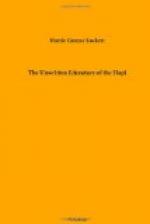“A brilliant star arose in the southwest, which would shine for a while and then disappear. The old men said, ’Beneath that star there must be people,’ so they determined to travel toward it. They cut a staff and set it in the ground and watched till the star reached its top, then they started and traveled as long as the star shone; when it disappeared they halted. But the star did not shine every night, for sometimes many years elapsed before it appeared again. When this occurred, our people built houses during their halt; they built both round and square houses, and all the ruins between here and Navajo Mountain mark the places where our people lived. They waited till the star came to the top of the staff again, then they moved on, but many people were left in those houses and they followed afterward at various times. When our people reached Wipho (a spring a few miles north from Walpi) the star disappeared and has never been seen since.”
There is more of the legend, but quoted here are only a few closing lines relative to the coming of the Lenbaki (the Flute Clan):
“The old men would not allow them to come in until Masauwu (god of the face of the earth) appeared and declared them to be good Hopitah. So they built houses adjoining ours and that made a fine large village. Then other Hopitah came in from time to time, and our people would say, ‘Build here, or build there,’ and portioned the land among the new-comers."[24]
[Footnote 24: Mindeleff, Victor, Pueblo architecture (Myths after Stephen): Bureau American Ethnology, vol. 8, pp. 17-18, 1887.]
The foregoing tradition furnishes the answer to two things one asks in Hopiland. First, why have these people, who by their traditions wandered from place to place since the beginning of time, only building and planting for a period sometimes short, sometimes a few generations, but not longer, they believe—why have they remained in their present approximate location for eight hundred years and perhaps much longer? The answer is their story of the star that led them for “many moves and many stops” but which never again appeared, to move them on, after they reached Walpi.
The second point is: The Flute Dance, which is still held on the years alternating with the Snake Dance, is of what significance? It is the commemoration of the arrival of this Lenbaki group, a branch of the Horn people, and the performance of their special magic for rain-bringing, just as they demonstrated it to the original inhabitants of Walpi, by way of trial, before they were permitted to settle there.
=Flute Ceremony and Tradition=
This Flute ceremony is one of the loveliest and most impressive in the whole Hopi calendar. And because it is one which most clearly illustrates this thesis, some detail of the ceremony will be given.




